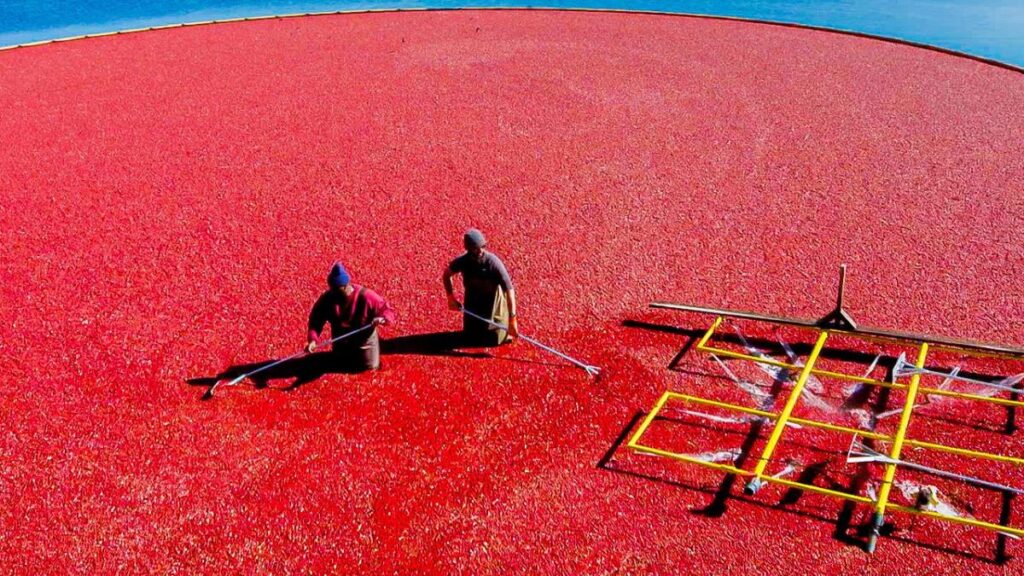Cranberry season is a vibrant and celebrated time of year, especially in North America, where these ruby-red fruits are not just a dietary staple but also a symbol of the fall season. Regarded as a super fruit, cranberries are packed with nutrients and powerful antioxidants, making them highly valued for their health benefits. Research suggests that the consumption of cranberries may bolster immune function, lower blood pressure, and possibly prevent specific types of cancer. The popularity of cranberries is evident in the staggering statistic that Americans consume over 400 million pounds annually, with a notable 20% of that figure consumed during Thanksgiving week. As families gather to give thanks, cranberries frequently take center stage, often appearing as sauce, juice, or even in baked goods.
Understanding the source of cranberries leads us to the unique environment of cranberry bogs, wetland ecosystems that are crucial for the growth and harvesting of these fruits. Characterized by thick sphagnum moss, acidic waters, and spongy peat, cranberry bogs create an ideal habitat for the crops. During the growing season, these bogs remain dry; however, once harvest time arrives, farmers flood the fields with water. This flooding causes cranberries to detach from their vines as they float to the surface, making the harvest process efficient and sustainable. Beyond the cranberries, bogs support a diverse range of wildlife, including various insects and small creatures integral to the ecosystem’s health, all of which contribute to the agricultural landscape.
Among the unique inhabitants of the cranberry bogs are bog spiders, a collective term that includes several spider species like the wolf spider. Typically found in wetland areas, these spiders have adapted to their environment and possess an unusual method of hunting. Instead of spinning webs, bog spiders lie in wait just beneath the water’s surface, ready to ambush insects and small aquatic life that come close. Bog spiders are generally harmless to humans, lacking the potent venom and size needed for effective defense. Their presence is beneficial as they help control pest populations, such as cranberries’ enemies: fruitworms and weevils. This natural form of pest management is vital for the health of the cranberry crops and reflects the interconnectedness of life within the bog ecosystem.
As the cranberry harvest nears, the process takes on a systematic approach. Farmers flood the bogs, prompting cranberries to loosen. They utilize specialized harvesting machines equipped with spinning reels that gently knock the berries free, allowing them to float upward in the water. To further assist this process, farmers can add additional water to enhance the mobility of the berries. Once they are floating, tractors move around the bog to collect the cranberries from the surface. A powerful pump then works to siphon the berries along with water into waiting trucks. Through this method, cranberries are sorted, cleaned, and prepared for processing, ensuring they reach consumers in perfect condition.
The journey of cranberries from bog to table is a testament to both nature and farming ingenuity. After harvesting, cranberries can be transformed into a variety of delicious products that feature prominently in autumn celebrations, with Thanksgiving being the most significant. From sweet tart sauces to refreshing beverages and savory dishes, cranberries add a distinctive flavor and vibrant color to festive meals. Many households cherish traditional recipes that incorporate cranberries, creating a connection to seasonal celebrations and family traditions. As culinary creativity flourishes, more recipes and uses for cranberries continue to surface, ensuring that they maintain a beloved and essential spot in fall festivities.
In conclusion, cranberry season encapsulates a unique blend of natural beauty, agricultural practice, and cherished culinary tradition. The potential health benefits of cranberries highlight their importance as a nutritional powerhouse. Understanding the ecological role of cranberry bogs and the diverse species that inhabit them, especially the bog spiders, showcases the complex relationships necessary for sustaining agricultural productivity. Finally, the harvesting process reveals how human innovation harmonizes with nature, allowing for the effective gathering of this treasured fruit. As we anticipate the forthcoming holiday season, the continued exploration of cranberry recipes and their versatility promises to enhance our seasonal celebrations, ensuring cranberries remain a staple on our tables year after year.

